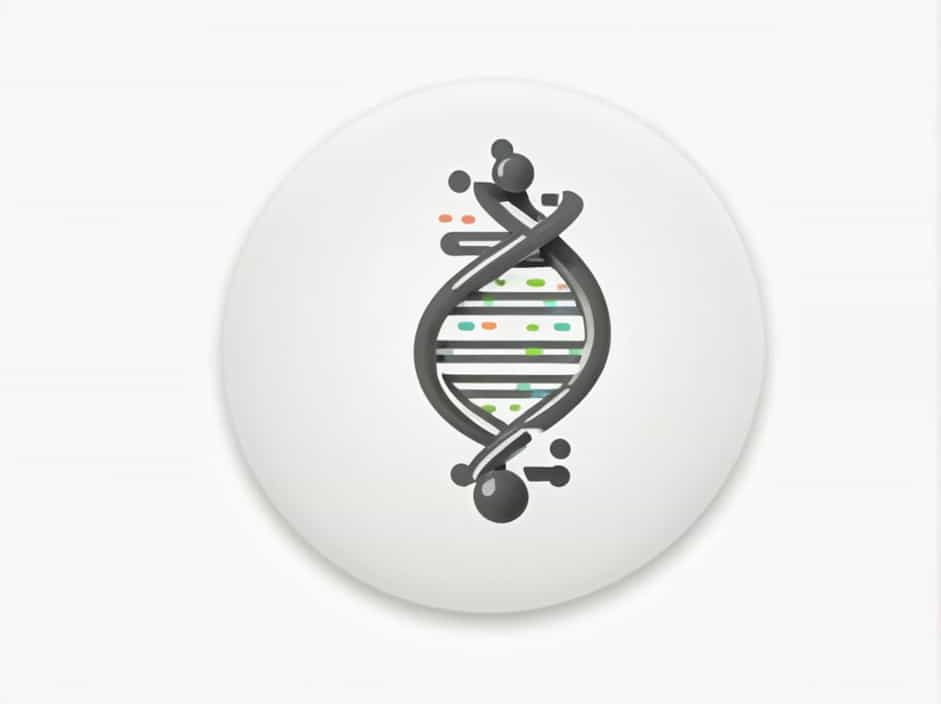DNA, or deoxyribonucleic acid, is the blueprint of life, containing the genetic instructions needed for growth, development, and reproduction. In eukaryotic cells, DNA is primarily housed within a specialized organelle known as the nucleus.
This topic explores the role of the nucleus, its structure, and its importance in storing and protecting genetic material.
What Is the Nucleus?
The nucleus is a membrane-bound organelle found in eukaryotic cells. It serves as the control center of the cell, regulating gene expression and coordinating cellular activities.
Key Functions of the Nucleus
✔ Houses DNA – Contains the genetic code needed for protein synthesis.
✔ Regulates Gene Expression – Controls which genes are activated or deactivated.
✔ Manages Cell Growth and Division – Plays a crucial role in cell cycle regulation.
The Structure of the Nucleus
The nucleus is a complex organelle made up of several components that work together to store and process genetic information.
1. Nuclear Envelope
The nuclear envelope is a double membrane that surrounds the nucleus. It controls the movement of molecules between the nucleus and the cytoplasm.
✔ Nuclear Pores – Tiny openings that regulate the exchange of RNA, proteins, and other molecules.
2. Chromatin and Chromosomes
Inside the nucleus, DNA is organized into chromatin, which consists of DNA wrapped around proteins called histones.
✔ During cell division, chromatin condenses into chromosomes, ensuring accurate DNA replication and distribution.
3. Nucleoplasm
The nucleoplasm is a gel-like substance inside the nucleus that provides a medium for molecules to move and function.
4. Nucleolus
The nucleolus is a dense structure within the nucleus responsible for ribosomal RNA (rRNA) synthesis and ribosome assembly.
How DNA Is Stored in the Nucleus
DNA in the nucleus is highly organized to fit within the small space while remaining accessible for gene expression.
DNA Packaging Process
- DNA wraps around histones, forming nucleosomes.
- Nucleosomes coil to create chromatin fibers.
- During cell division, chromatin condenses into chromosomes.
This structure ensures that genetic material is compact, protected, and accessible for cellular functions.
The Role of the Nucleus in Gene Expression
Gene expression is the process by which DNA instructions are used to produce proteins. The nucleus plays a key role in this by coordinating transcription.
Steps of Gene Expression in the Nucleus
✔ Step 1: Transcription – DNA is copied into messenger RNA (mRNA).
✔ Step 2: RNA Processing – The mRNA is modified and transported to the cytoplasm.
✔ Step 3: Translation (Outside the Nucleus) – Ribosomes read the mRNA to create proteins.
The nucleus ensures that only the necessary genes are expressed at the right time.
Other Organelles That Contain DNA
While the nucleus is the primary location of DNA, some other organelles also store genetic material.
1. Mitochondria (Powerhouse of the Cell)
✔ Contains mitochondrial DNA (mtDNA).
✔ Inherited exclusively from the mother.
✔ Plays a role in energy production and cell metabolism.
2. Chloroplasts (In Plant Cells Only)
✔ Contains chloroplast DNA (cpDNA).
✔ Involved in photosynthesis.
✔ Shares similarities with bacterial DNA.
These organelles provide additional genetic instructions specific to their functions.
Why Is the Nucleus Important for Cells?
The nucleus is vital for cell survival and function. Without it, cells could not store, replicate, or interpret genetic information.
Key Reasons Why the Nucleus Is Essential
✔ Ensures DNA Protection – Prevents genetic material from damage.
✔ Regulates Cell Functions – Controls metabolism and growth.
✔ Supports Cell Division – Ensures accurate DNA replication.
Diseases Related to Nuclear Dysfunction
Mutations or defects in the nucleus can lead to serious genetic disorders.
1. Cancer
✔ Uncontrolled cell division due to nuclear gene mutations.
✔ Abnormal chromosome structures can lead to tumor growth.
2. Progeria (Premature Aging Disorder)
✔ Caused by mutations in the LMNA gene, which affects nuclear stability.
3. Huntington’s Disease
✔ A genetic disorder linked to mutations in nuclear DNA that cause nerve cell degeneration.
Understanding the nucleus helps researchers develop gene therapies to treat genetic disorders.
Interesting Facts About the Nucleus
✔ The nucleus was the first organelle discovered (by Robert Brown in 1831).
✔ It takes up 10% of a cell’s volume.
✔ The human nucleus contains about 6 feet of DNA when stretched out.
✔ Some cells, like red blood cells, lack a nucleus to maximize space for oxygen transport.
How to Keep Your Cells Healthy
To maintain a healthy nucleus and DNA, follow these lifestyle tips:
✔ Eat a Balanced Diet – Antioxidant-rich foods protect DNA from damage.
✔ Exercise Regularly – Supports proper cell function.
✔ Avoid Toxins – Reduce exposure to harmful chemicals.
✔ Get Enough Sleep – Rest is essential for DNA repair.
A healthy nucleus ensures optimal cell function, reducing the risk of genetic disorders.
The nucleus is the main organelle where DNA is located, serving as the command center of the cell. It regulates gene expression, cell division, and overall cellular function.
While other organelles like mitochondria and chloroplasts also contain DNA, the nucleus is the primary storage site for genetic information. Understanding its structure and function highlights its importance in maintaining life and cellular health.
